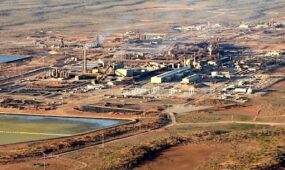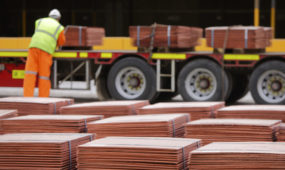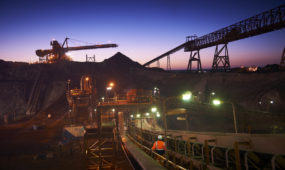Wastewater treatment company's global expansion
Mining & Resources
WATER treatment technology that can clean some of the world’s most polluted waste liquids cheaply, quickly and efficiently is being prepared for global deployment.

Sign up to receive notifications about new stories in this category.
Thank you for subscribing to story notifications.
WATER treatment technology that can clean some of the world’s most polluted waste liquids cheaply, quickly and efficiently is being prepared for global deployment.
Micromet has designed a water treatment machine in South Australia, which uses electrolysis to remove pollutants from contaminated water such as sewage, grey water, and industrial effluents.
The company signed a Memorandum of Understanding with Chinese industrial group Dadongwu in Adelaide last week and is setting up a manufacturing plant in South Australia.
Micromet Engineering Sales Director Andrew Townsend said the company’s six-module machines could clean 12-litres a second and could be deployed in a standard 40-foot shipping container.
He said most other water treatment technologies usually took 24 to 36 hours to treat wastewater.
“The residence time in our machine from when the dirty water drops in one end to when it starts to flow out the other end is around 50 minutes,” Townsend said.
“We’re shipping them in shipping containers because pretty much you just drop the container in, affix pipes to it and attach power and make sure it’s all working and you can literally commission it in a day or two days, which is very different from having to build a traditional system which can take months and months to construct.”
The process uses continuous flow electrolysis methods with special anti passivation technology that has eluded such systems in the past. The Micromet equipment is also very energy efficient, using just 0.25KWH to process 1000 litres compared to a reverse osmosis system that can require 20-40KWH to process the same amount.
Micromet has been manufacturing mainly irrigation control technology in South Australia – which has an advanced water industry because it is the driest state on the driest continent on Earth – for two decades. But the company was forced to look for new opportunities in wastewater treatment when a devastating drought across southeast Australia from 2007-2012 almost brought Micromet to its knees.
Until now the company has been mainly focused on wastewater treatment research and development, producing only a handful of commercial bespoke machines. The new plant will aim to produce 50 six-module machines a month within a year.
“What Micromet has developed is a fair bit cheaper in terms of the actual machine in the first instance and on top of that is a fair bit cheaper to run than most other types of systems,” Townsend said.
“We’re up to Generation 3, we’re imagining Generation 4 will be our first solar powered model and Generation 5 we’re hoping will literally be able to float on a dam, be powered by solar and treat the dam while floating on it.”
Micromet took a prototype machine to China in November and successfully treated three highly contaminated industrial wastewaters – electroplating water, machining emulsion and garbage permeate as part of a demonstration.
Non-industrial water treatment applications include sewage and mining waste such as fracking water.
The treated “A Class” water can then be re-used in factories or mines or used for irrigation. The pollutants removed from the wastewater account for about six per cent of the original volume.
“My hope is that we can eventually get to the point where we can return the treated water to the environment,” Townsend said.
“Water doesn’t wear out – many factories will be able to use the water again and again.”
Townsend said the Chinese Government had made water and air pollution a priority in its five-year plan.
“That’s a massive market for us because at the moment there’s no incumbent technologies,” he said.
“It’s estimated that China will make up 50 per cent of the world water treatment market over the next five years.
“We’ve estimated that our slice of the pie could be anywhere up to $20 billion Australian dollars over the next five to seven years.
“India is also going gangbusters so when we’re trying to plan this facility we don’t want it to be just maxed out producing machines for China, we want to have some additional capacity to supply other markets as well.”
Micromet partnered with a Canadian business to create a joint venture called Living Sky Water Solutions in 2014 after Canada’s Water Security Agency outlawed the “lagooning” method of treating effluent in small communities. Last month it signed a deal to build a one megalitre per day wastewater treatment plant for the prairie town of Kerrobert in Saskatchewan, Canada.
“We have another five (Canadian towns) on the books in various stages of negotiations and the number of communities over there that need a service similar to ours is about 1800 so we estimate the potential value of Canada to us is about $1 billion over five to seven years,” Townsend said.
Dadongwu is a partially state-owned industrial group based in Huzhou, southwest of Shanghai. It has a wide range of business interests including construction of hotels and ports, automotive manufacturing, and water treatment technologies. Dadongwu is directly investing $2 million in Micromet while the South Australian Government has given the company $26,000 to develop and implement a marketing and brand strategy for Australian and international markets.
Townsend said the government help and support from SinoSA, the Water Industry Alliance and Investment Attraction South Australia had been crucial to Micromet’s success in securing international partners.
Jump to next article



